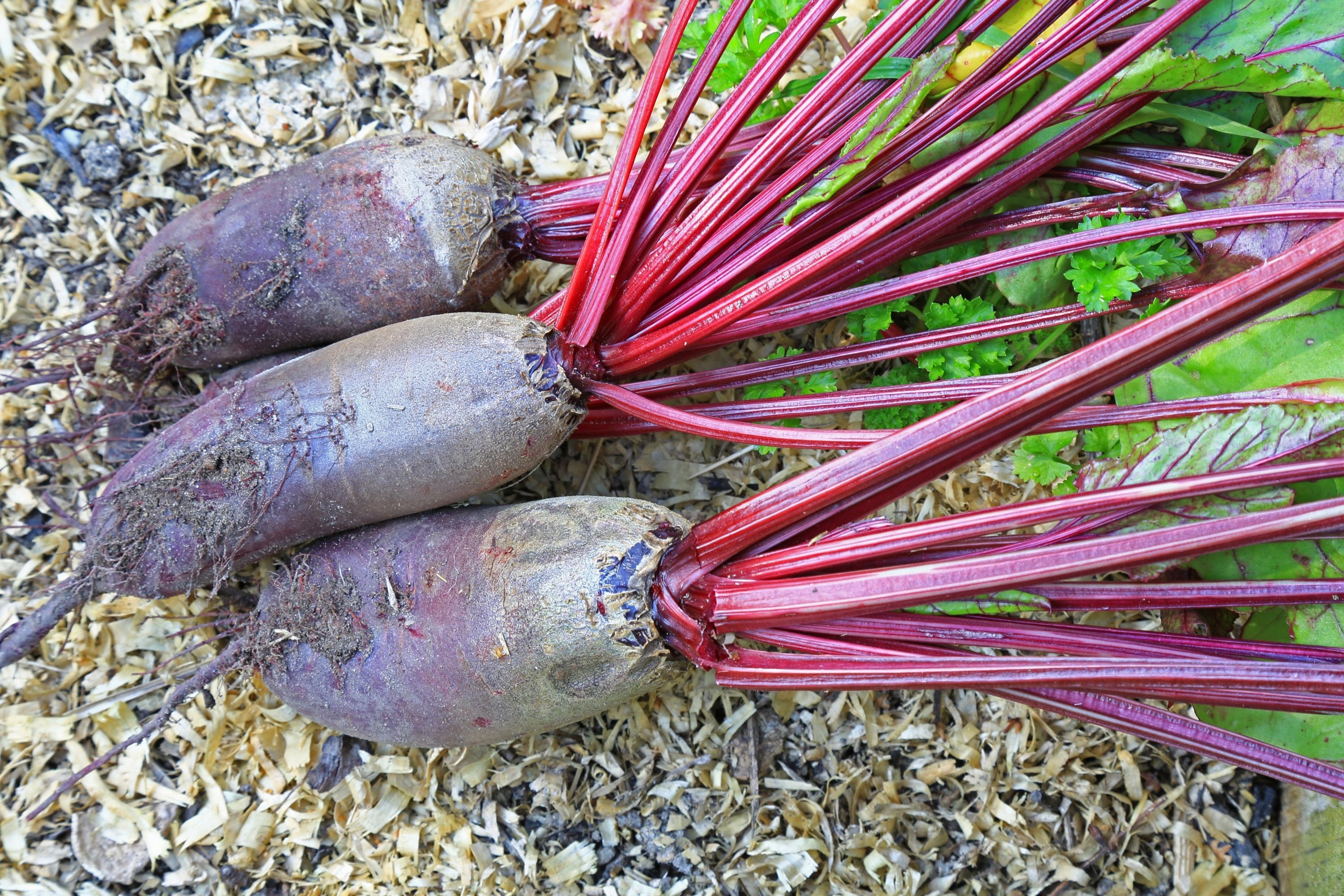Beet
(Beta vulgaris)

Description
Beta vulgaris (beet) is a species of flowering plant in the subfamily Betoideae of the family Amaranthaceae. Economically, it is the most important crop of the large order Caryophyllales. It has several cultivar groups: the sugar beet, of greatest importance to produce table sugar; the root vegetable known as the beetroot or garden beet; the leaf vegetable known as chard or spinach beet; and mangelwurzel, which is a fodder crop. Three subspecies are typically recognised. All cultivars fall into the subspecies Beta vulgaris subsp. vulgaris. The wild ancestor of the cultivated beets is the sea beet (Beta vulgaris subsp. maritima). Beta vulgaris is a herbaceous biennial or, rarely, perennial plant up to 120 cm (rarely 200 cm) height; cultivated forms are mostly biennial. The roots of cultivated forms are dark red, white, or yellow and moderately to strongly swollen and fleshy (subsp. vulgaris); or brown, fibrous, sometimes swollen and woody in the wild subspecies. The stems grow erect or, in the wild forms, often procumbent; they are simple or branched in the upper part, and their surface is ribbed and striate. The basal leaves have a long petiole (which may be thickened and red, white, or yellow in some cultivars). The simple leaf blade is oblanceolate to heart-shaped, dark green to dark red, slightly fleshy, usually with a prominent midrib, with entire or undulate margin, 5–20 cm long on wild plants (often much larger in cultivated plants). The upper leaves are smaller, their blades are rhombic to narrowly lanceolate. The flowers are produced in dense spike-like, basally interrupted inflorescences. Very small flowers sit in one- to three- (rarely eight-) flowered glomerules in the axils of short bracts or in the upper half of the inflorescence without bracts. The hermaphrodite flowers are urn-shaped, green or tinged reddish, and consist of five basally connate perianth segments (tepals), 3-5 × 2–3 mm, 5 stamens, and a semi-inferior ovary with 2-3 stigmas. The perianths of neighbouring flowers are often fused. Flowers are wind-pollinated or insect-pollinated, the former method being more important. In fruit, the glomerules of flowers form connate hard clusters. The fruit (utricle) is enclosed by the leathery and incurved perianth, and is immersed in the swollen, hardened perianth base. The horizontal seed is lenticular, 2–3 mm, with a red-brown, shiny seed coat. The seed contains an annular embryo and copious perisperm (feeding tissue).
Taxonomic tree:







